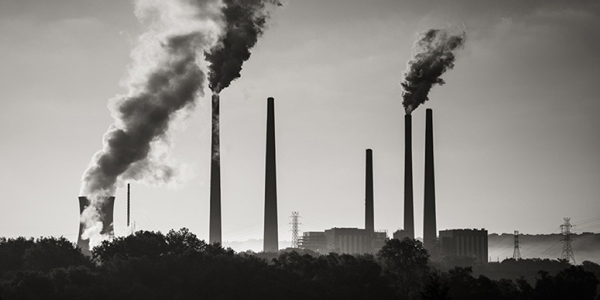By Steve Huntoon
Are you up for a pop quiz today? OK here we go, and please no peeking ahead to the answers.
Q1. In their comments to FERC on the Department of Energy proposal, how many times did FirstEnergy and Murray Energy use the word “baseload” to refer to the generation they want subsidized?
- 4
- 40
- 400
Q2. What does “baseload” mean according to DOE’s Energy Information Administration, in percent of hours that a plant runs?
- About 40% of the time
- About 80% of the time
- About 100% of the time
Q3. What percent of hours did FirstEnergy’s W.H. Sammis coal plant, our clunker poster child, run last year?
- About 40% of the time
- About 80% of the time
- About 100% of the time
Q4. In their comments to FERC, how many times did FirstEnergy and Murray Energy use the word “premature” to refer to retirement of the generation they want subsidized?
- 17
- 117
- 170
Q5. How old are FirstEnergy’s Sammis units slated for retirement?
- 18 years
- 38 years
- 58 years
Q6. The ages of FirstEnergy’s Sammis units are…
- More than the average retirement age of coal plants for every year since 1999.
- Less than the average retirement age of coal plants for every year since 1999.
Q7. How much would it cost consumers to subsidize the Sammis units?
- $1 million.
- $1 billion.
- No one has the foggiest idea.
The Answers
The answer to Q1 is c, FirstEnergy and Murray Energy use the word “baseload” an amazing 400 times. Truth by repetition.
The answer to Q2 is c, about 100% of the time. The meaning of a “baseload” plant is one that “produces electricity at an essentially constant rate and runs continuously,” per DOE’s EIA glossary.[1]
The answer to Q3 is a, about 40% of the time. EIA data show Sammis 2016 generation as 8,112,503 MWh[2] relative to Sammis plant capacity of 2,220 MW. So the Sammis capacity factor is 41.7% (8,112,503 MWh divided by 2,220 MW divided by 8,760 hours/year).
Let’s pause here to observe that FirstEnergy’s Sammis plant, running about 40% of the time, cannot be a baseload plant, which by EIA definition must run about 100%. It is not even close.
And this isn’t some recent phenomenon due to low natural gas prices and/or renewable penetration. The EIA data show that the Sammis plant has had a poor capacity factor since 2009.
And I haven’t cherry-picked the Sammis plant. The Sammis units are the largest units that FirstEnergy has identified for future retirement to PJM.[3]
That’s why Sammis is our clunker poster child!
OK, back to the answers.
The answer to Q4 is c, FirstEnergy and Murray Energy use the word “premature” an amazing 170 times.
The answer to Q5 is c, 58 years. The retiring Sammis units were built from 1959-1962, per the FirstEnergy website,[4] and they’re scheduled to retire in 2020.
The answer to Q6 is a. The average retirement age of coal plants for every year since 1999 has never exceeded 54 years.[5]
Let’s pause here to observe that the retiring Sammis units are old, almost as old as me. They’re well past the average annual retirement ages of coal plants.
So there is absolutely nothing “premature” about the Sammis units retiring.
The answer to Q7 is of course, c. Nobody has the foggiest idea what it will cost consumers to subsidize the non-baseload, old Sammis units.
And the cost won’t just be squandered consumer money. Keeping clunkers like Sammis around will keep out new power plants that are three times as reliable as the clunkers.[6] Not to mention losing the environmental/public health benefits of cleaner generation.[7]
Let us hope FERC does the right thing.
- https://www.eia.gov/tools/glossary/index.php?id=B ↑
- https://www.eia.gov/electricity/data/browser/ (Select the “Plant level data” data set, search for Sammis, and select annual 2016 data.) ↑
- http://pjm.com/-/media/planning/gen-retire/pending-deactivation-requests-xls.ashx ↑
- https://www.firstenergycorp.com/content/dam/corporate/generationmap/files/W%20H%20Sammis%20Plant%20Facts.pdf ↑
- http://www.powermag.com/americas-aging-generation-fleet/ (Table 2) ↑
- As discussed in an earlier column, retiring units in PJM have an outage rate (“equivalent forced outage rate – demand” aka ERORd) that is three times the new units (14.56% versus 4.42%). http://pjm.com/-/media/committees-groups/committees/mrc/20170928/20170928-item-07-2017-irm-study-presentation.ashx (slide 7). ↑
- As discussed in an earlier column, the environmental/public health damage of coal generation amounts to about $32/MWh (even before greenhouse gas impacts), relative to $1.60/MWh for natural gas generation. https://www.nap.edu/catalog/12794/hidden-costs-of-energy-unpriced-consequences-of-energy-production-and (pages 92 and 118). ↑



